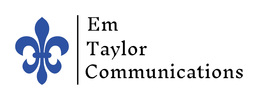
I am late for work, and the traffic is horrible. Someone cuts me off; I feel like swearing and showing them who’s boss, but I don’t’ want to miss my exit. I know that I should have left earlier, but I slept in that extra ten minutes then had to fix my daughter’s bike before I headed out the door—why didn’t she bring it up last night when I had time? Then my spouse wants me to let her know if I would be going to the kids concert that night. I just said we’d talk about it later—I couldn’t deal with that before I left. I could tell she was annoyed by my avoiding a direct answer, but I had to just get out the door.
When I get to my office, I’m already in an irritated mood, wondering how I’m going to get the board presentation ready in time for tomorrow. During my commute, my co-worker has texted me about a spontaneous budget meeting planned for today. I check my office messages and realize that I’ve forgotten to follow up with a smaller, but still important customer. Should I call now, a little later, or just hold off until after my budget and management meetings? I am already stressed before my day has really begun. I’ve mostly chosen to ignore the potential conflicts, but wonder how to respond to these different demands and potential conflicts in a helpful way.
While hypothetical, this scenario demonstrates that every day, we encounter different kinds of minor to major stresses and potential conflicts that may challenge our ability to respond constructively and flexibly. From experience, we know that there is not just one approach to conflict that will work in every situation, even with the very same people we interact with every day. Instead, we encounter conflict situations that require adapting our conflict approaches to the specific conditions and needs we come across despite our likely familiarity with the people with whom we’re conflicting.
Rather than being rooted solely in personality, our reactions and approaches to conflict, better relate to learned languages than fixed genetic traits. In a way, our responses to conflict are like different languages with associated expressions, gestures, tones of voice, actions (or even inaction) to communicate our particular goals or interests. In fact, we may need to use a variety of languages or approaches to effectively communicate with even the very same person on a given day. Our language or choice of approach may depend upon the conflict situation and issue, and not just the person or our mood.
While hundreds of foreign languages and dialects exist for the spoken language, there are basically just five main approaches people use to deal with conflict. These conflict management approaches include: avoiding, accommodating, competing, compromising, and collaborating. By becoming skilled in each of these five approaches we can learn to more effectively communicate and resolve conflict in ways tailored to particular people, situations, and our respective goals.
Learning New Languages
To truly become skilled in conflict resolution, the trick is to first gain an awareness of our “native” conflict language(s). By native conflict language, I mean how we generally approach conflict in terms of our thoughts, emotions, words, behaviors, gestures, and reactions, both large and small. Native implies some sense of instinct or habit that comes from unconscious reaction and behavior in our daily lives. Based on how we were raised and our given temperaments, from a very young age, we have each learned conflict styles that heavily influence how we deal with daily conflict in both constructive and destructive ways.
Despite having learned certain conflict approaches throughout our lives, we can still modify and adapt our approaches to be much more effective communicators both professionally and personally.
Five Main Conflict Approaches
Identification of the Conflict Languages by Essential Characteristics
Borrowing terms adopted by Thomas and Kilmann, these five conflict approaches reflect various degrees of assertiveness (meeting our own goals) and cooperativeness (meeting others’ goals). Each general approach represents specific goals and values, and involves certain benefits and drawbacks depending upon our specific purpose for selecting that approach. The five main conflict approaches include:
- Avoiding
- Accommodating
- Compromising
- Competing
- Collaborating
Rather than focus just on learning a new approach or justifying our own use of a particular response, we consider the five conflict languages with the purpose of learning each of them. We want to know each of the five conflict approaches well enough to be able to apply each of them in the right situations to satisfy our own and, perhaps, others’ goals. We focus on grasping each approach’s usefulness in the diverse conflict situations we encounter in our daily lives at work, at home, and in the community.
Definition of Each Conflict Approach
Paraphrasing the succinct language of conflict specialists, Spangle and Isenhart, we define each conflict approach as follows:
- Avoiding
- Accommodating
- Compromising
- Competing
- Collaborating
Potential Goals or Meaning Behind Each Conflict Language
Different languages or approaches work in different situations. Just like speaking German to the English speaking cashier at our local grocery store might not allow for real communication, collaboration may not always be appropriate in certain forceful, competitive negotiations in the workplace. No one method will be appropriate for every conflict situation we encounter.
Throughout a lifetime, we seek to become fluent in each of the five approaches in order to achieve our own interests and goals depending upon the situation. The trick for us, in both our professional and personal lives, may be to move from one tactic to another depending upon the situation and our understanding of the abilities and needs of the people we’re interacting with. In effect, there is not just one conflict approach to resolve all conflict, but we consider more a blend of different approaches applied in the right situations.
For example, after driving a hard negotiation with a potential buyer at work, can I return home and switch my tactic to accommodation and/or collaboration if my tired toddler refuses to eat the meal that I have prepared? Will I then be prepared to avoid talking with the solicitor who knocks on my door while I’m eating dinner with my family? Later that evening, can I then carefully listen to my partner vent his or her frustration about a distressing health issue without interrupting?
Each relationship and/or situation may demand some flexibility and insight to get the right balance of achieving our own goals in relation to others’ goals. Given our native tendencies and habitual conflict approaches, we may over, under, or misuse certain conflict approaches in our lives. But, with our increased awareness and understanding of these five conflict approaches, we will greatly enhance the possibility of reaching our diverse goals and interests. We are not too old to learn some new approaches and move our communication skills beyond our current habits.
Pros and Cons of Each Conflict Language and Best Conditions for Use
In the weeks to come, we review the pros and cons of each of the five conflict approaches to better understand how each type of response may help or hinder us from reaching our communication and relational goals with others.
In addition, while difficult to predict all the particulars of each conflict situation we may encounter, we will explore the ideal situations and conditions for applying each conflict approach. We will also briefly highlight which contexts are most suited to reaching particular goals via specific conflict management approaches to begin developing our own decision making compass or framework for conflict.

 RSS Feed
RSS Feed